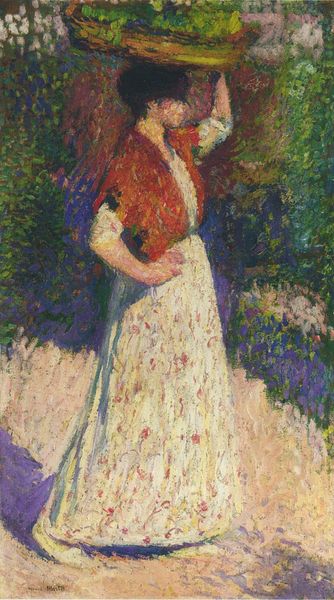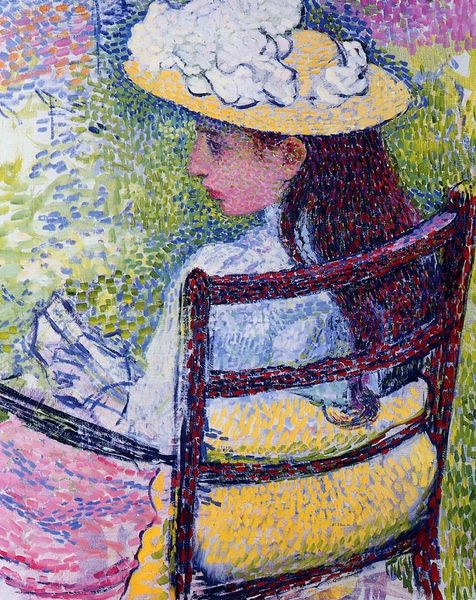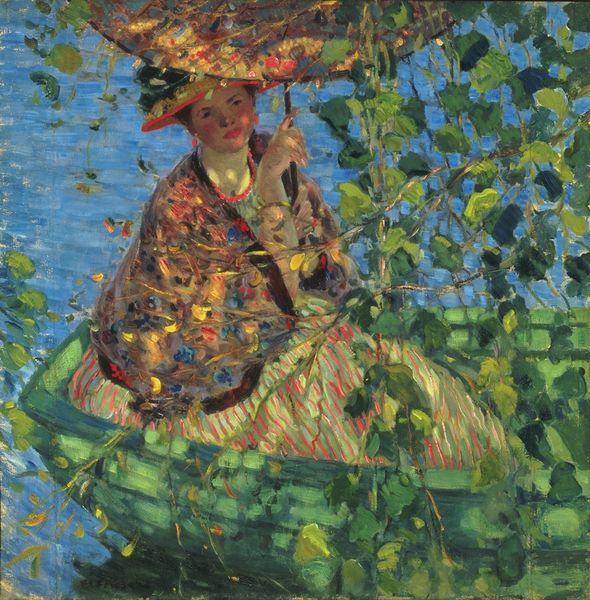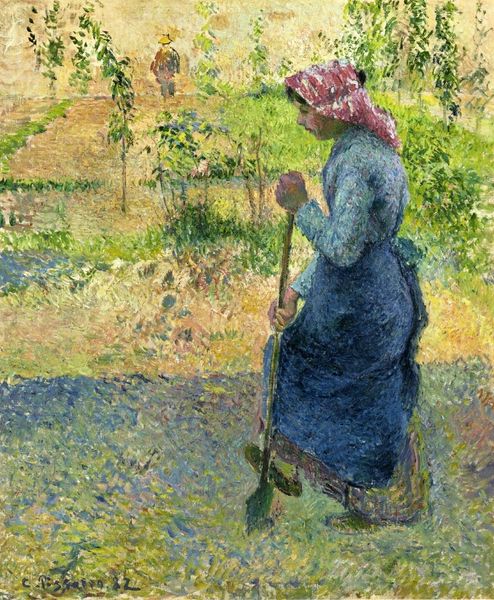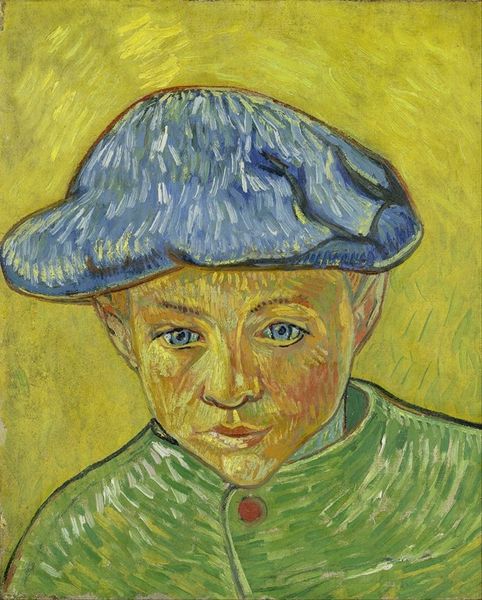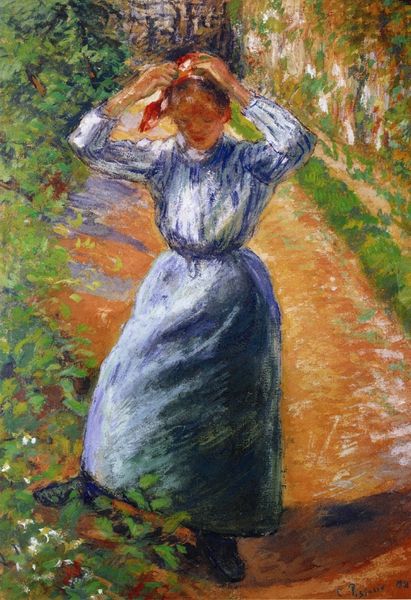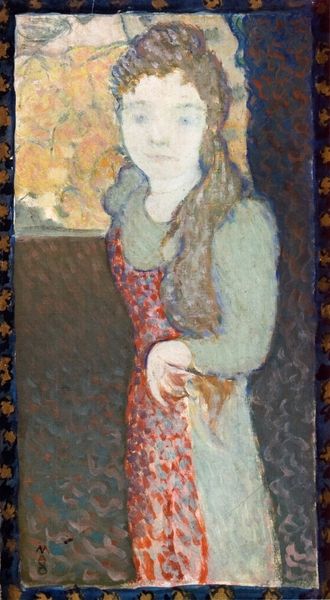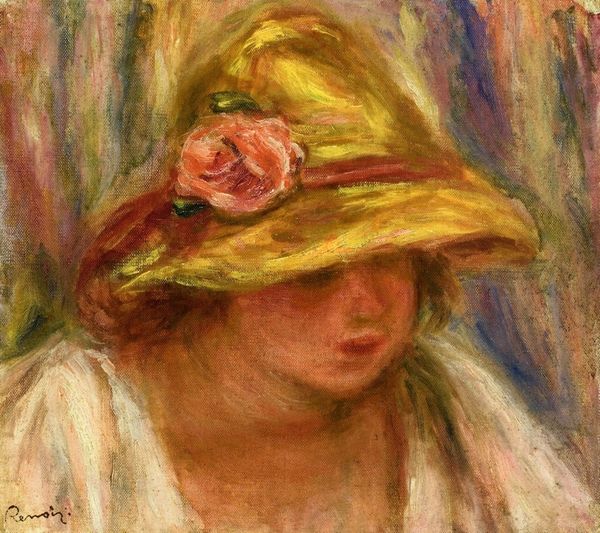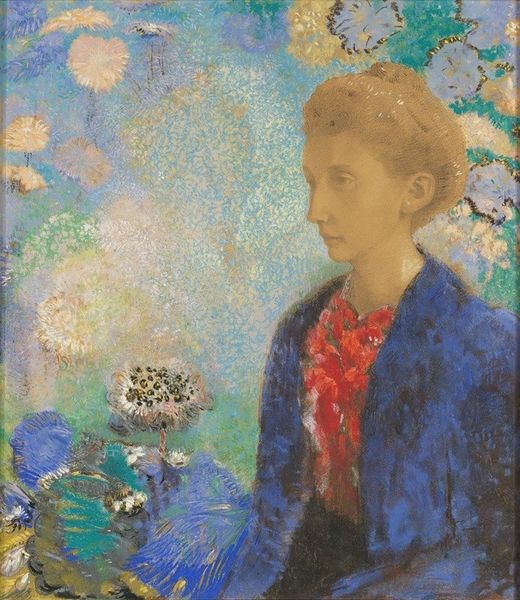
painting, plein-air, oil-paint
#
portrait
#
painting
#
impressionism
#
plein-air
#
oil-paint
#
landscape
#
child
#
post-impressionism
Copyright: Public domain
Editor: This is Henri Martin's oil painting "Portrait of a Young Girl". The pointillist style makes me focus on the paint itself rather than the subject; it's more about the materiality than the person. What do you make of his technique and how it serves the overall composition? Curator: What stands out is how the production embraces its raw components. Martin uses oil paint not to conceal but to emphasize the work's construction. This moves beyond pure representation of a girl to a social commentary. Consider the labour-intensive process of pointillism. Each dot a testament to the artist’s hand, reflecting a period obsessed with industry and labor. Do you see how that translates here? Editor: I hadn't thought about the labour involved in each dot! It does feel almost…industrial, even though it’s a portrait in a landscape. Does the choice of representing the girl within nature have to do with notions of work or consumption? Curator: Absolutely! Placing the subject outdoors, using plein-air techniques, comments on society’s shifting relationship with nature. It’s no longer just a backdrop but becomes actively consumed, a leisure commodity. Notice the interplay of colours and textures. They suggest both natural beauty and the means of producing art – pigments, canvas. It’s all interconnected. What's your final takeaway on how all of that plays together here? Editor: That's so interesting! I realize that Martin's work not only represents but actively embodies the tension between artistic labor and social life of his time. The very making of the painting is intertwined with the era's socioeconomic fabric. Thanks for illuminating that for me! Curator: Precisely. Thinking about art as a material product reshapes how we view its role in our culture and economy. I’m glad that this opened new ways of interpreting this piece.
Comments
No comments
Be the first to comment and join the conversation on the ultimate creative platform.
